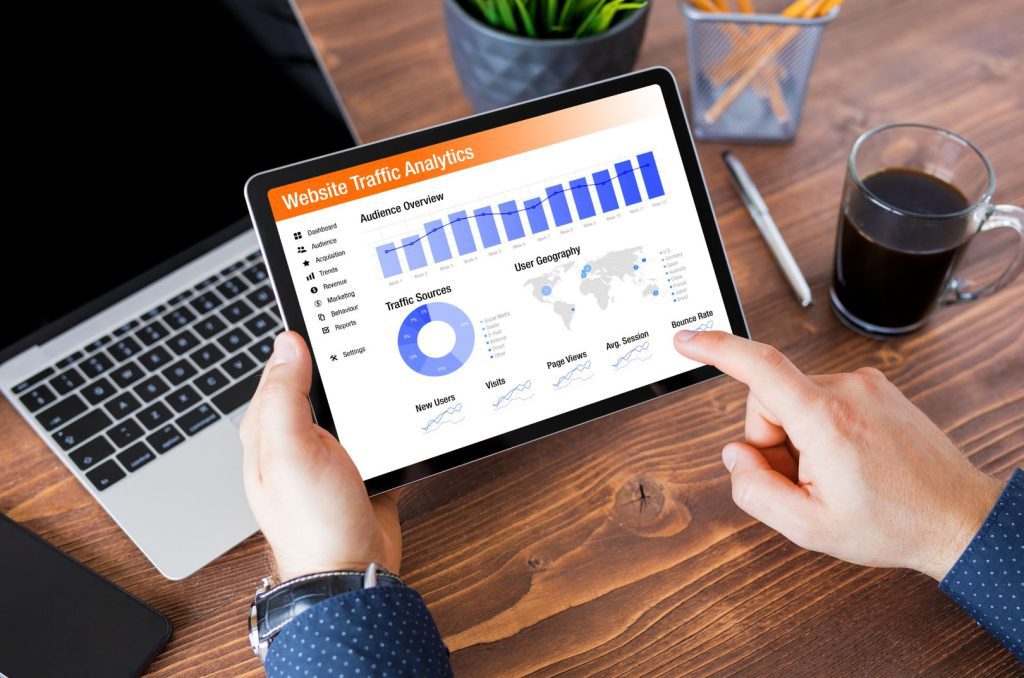Google Ads is a powerful tool that you can use to reach a larger audience and increase sales. However, understanding how your campaigns are performing, what’s working, and what isn’t, is critical to optimising the effectiveness of your marketing budget.
This article provides an overview of Google Ads key performance indicators (KPIs) and metrics, strategies for tracking and analysing data, and ways to optimise your campaigns for maximum efficiency and effectiveness. I’ll cover conversion rate, average order value, click-through rate, enquiry to leads, ROAS, return on ad spend, and cost per conversion.
Key Performance Indicators
1) Conversion Rate

The first metric used to measure the success of a Google Ads campaign is the conversion rate. The conversion rate measures the number of unique visitors to a website who take a desired action, such as making a purchase or downloading an app. It is usually expressed as a percentage of the total number of unique visitors. The higher the conversion rate, the better the campaign performance.
2) Click-Through Rate (CTR)
The Click-Through Rate (CTR) is the percentage of people who click on an advertisement after seeing it. A high CTR indicates that the ad is interesting and engaging, and information can be used to help improve a campaign’s overall performance.
3) Average Order Value (AOV)

The average order value (AOV) measures the average amount spent by a customer during a single transaction. A high AOV indicates that customers are willing to spend more money on advertised products or services.
4) Enquiry to Leads
You can measure the number of enquiries converted into leads. The reason for tracking this metric is so you can determine which ads generate the most sales leads and tweak campaigns accordingly.
5) Return on Advertising Spend (ROAS)/Cost Per Conversion (CPC)

These are essential KPIs to track when analysing the performance of a Google Ads campaign. ROAS measures the revenue generated relative to the amount spent, which can help identify the most effective campaigns. Meanwhile, CPC calculates the cost per conversion and helps businesses prioritise their spending.
Tracking Strategies and Tools
The most effective way to collect and organise the data related to these metrics is to use a tracking tool, such as Google Analytics, to measure the performance of your campaigns. This platform can help you organise and analyse the data to identify improvement areas and make changes accordingly.
Implementing Strategies for Optimisation
Once the data collected from tracking Google Ads campaign performance is analysed, it is time to implement strategies designed to optimise results. This approach can be broken down into two parts: identifying where adjustments need to be made and then changing the campaigns to increase performance.
The most important metric to consider when analysing data is the Cost Per Conversion metric, which will play a significant role in deciding whether adjustments need to be made. If the Cost Per Conversion is too high, it may be necessary to make changes to reduce it. This can include altering bids on specific keywords, increasing the budget for campaigns that are performing well, and pausing campaigns that are not producing results.
Other metrics to consider when evaluating performance are Click Through Rate, Average Order Value, Return on Ad Spend, and Enquiry to Leads. These can provide essential insights regarding how users respond to campaigns and if further optimisation is needed. For instance, if the CTR is low, it could indicate that the ads need to be adjusted, while a high AOV indicates that campaigns are driving sales.
Once areas for improvement have been identified, changes can be made to increase performance. This could include changing ad copy, targeting different audiences, and utilising more sophisticated targeting options such as remarketing or lookalike audiences. Experimenting with other bids and budgets is also important to find the right balance between cost and performance.
By taking action based on the data collected through tracking KPIs and metrics related to Google Ads campaigns, it is possible to optimise campaign performance and maximise return on investment.
Conclusion
This article has outlined the importance of tracking key performance indicators and metrics related to Google Ads. We outlined each of the five metrics, focusing on their significance when measuring the performance of an ads campaign. We also examined the different tracking strategies and tools available to measure analytics and collect and organise data.
Finally, we explored various strategies for optimising campaign performance and adjusting and changing based on the data collected. You should now better understand how to track optimises to optimise ROI from a Google Ads campaign.




